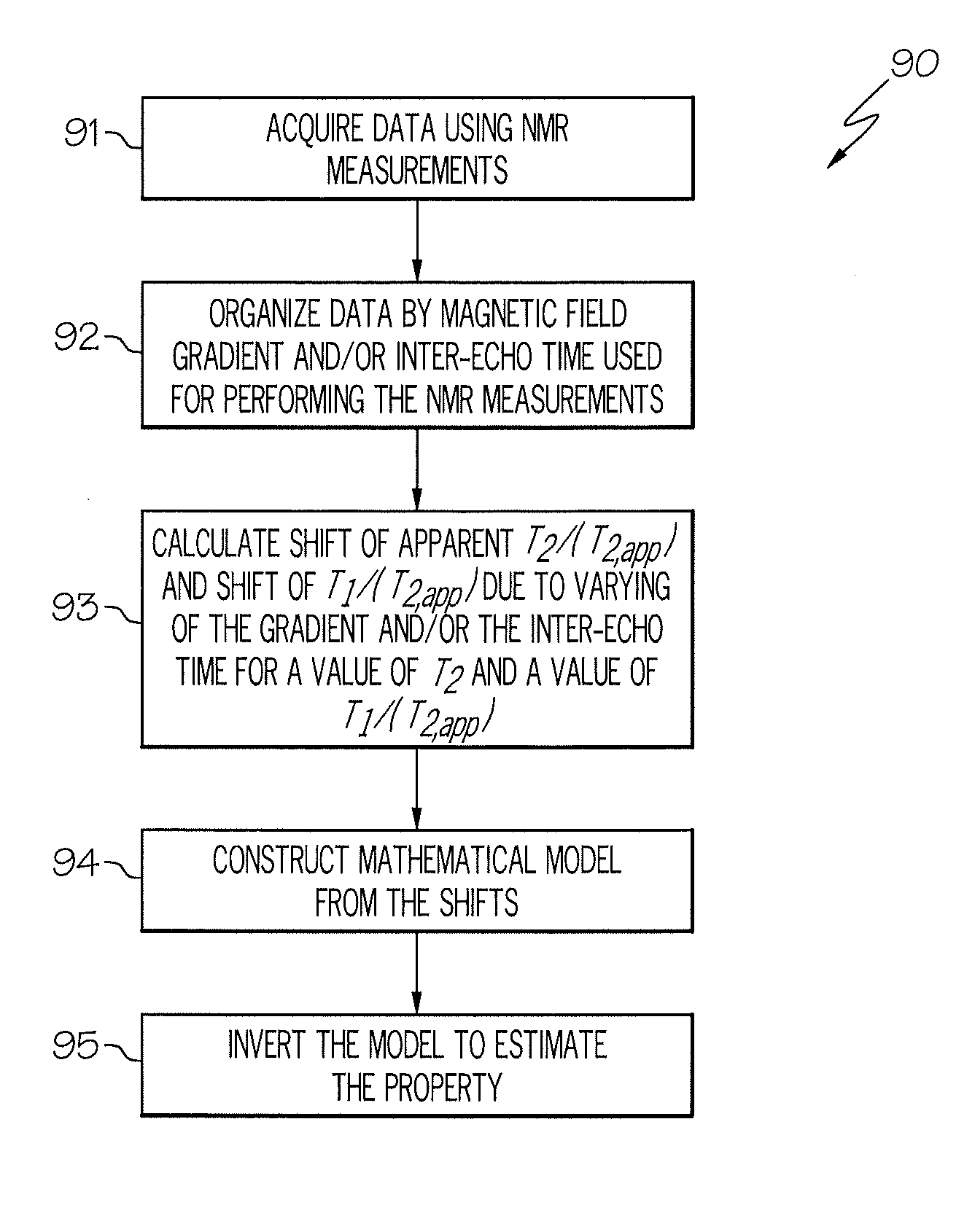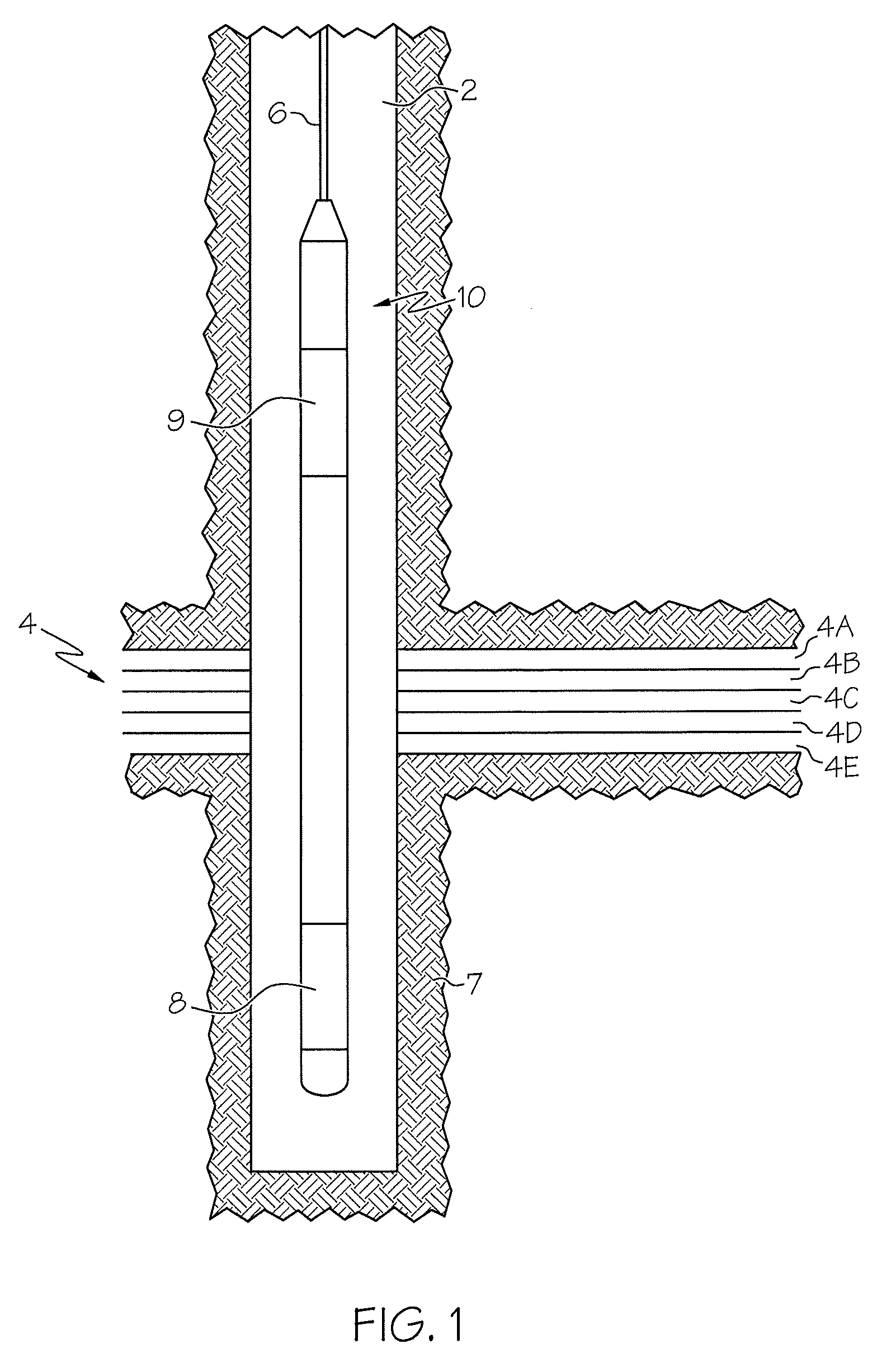Two dimensional t1/t2app-t2app processing of multi-gradient nmr data
a multi-gradient, nmr data technology, applied in the direction of instruments, analysis using nuclear magnetic resonance, reradiation, etc., can solve the problems of increased uncertainty in hydrocarbon characterization and inadequate spectral resolution
- Summary
- Abstract
- Description
- Claims
- Application Information
AI Technical Summary
Benefits of technology
Problems solved by technology
Method used
Image
Examples
Embodiment Construction
[0023]The teachings provide techniques for processing nuclear magnetic resonance (NMR) data to determine a property of a material. The techniques include a method and an apparatus for simultaneously calculating longitudinal and transverse relaxation time spectra as well as volumetric attributes associated with NMR petrophysical analysis. The techniques are based upon a generalized mathematical model of NMR instrument responses that account for variation of a magnetic field gradient and / or an inter-echo time between different parts of a data set. Two-dimensional NMR relaxation analysis is provided by the mathematical model.
[0024]Significant advantages of two-dimensional relaxation analysis include: a) enhanced stability and reduced complexity of implementation with respect to gradient-by-gradient type processing and b) an increased spectral resolution due to the expanded amount of input data available for processing.
[0025]For convenience, certain definitions are provided for use thro...
PUM
 Login to View More
Login to View More Abstract
Description
Claims
Application Information
 Login to View More
Login to View More - R&D
- Intellectual Property
- Life Sciences
- Materials
- Tech Scout
- Unparalleled Data Quality
- Higher Quality Content
- 60% Fewer Hallucinations
Browse by: Latest US Patents, China's latest patents, Technical Efficacy Thesaurus, Application Domain, Technology Topic, Popular Technical Reports.
© 2025 PatSnap. All rights reserved.Legal|Privacy policy|Modern Slavery Act Transparency Statement|Sitemap|About US| Contact US: help@patsnap.com



